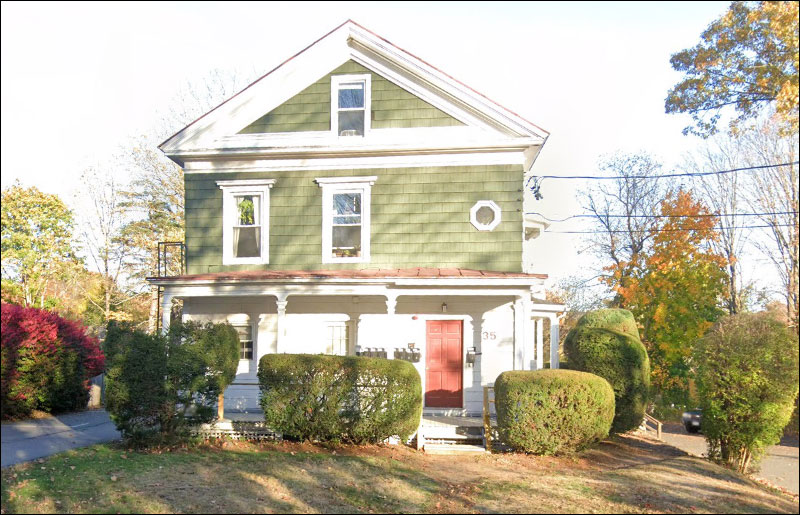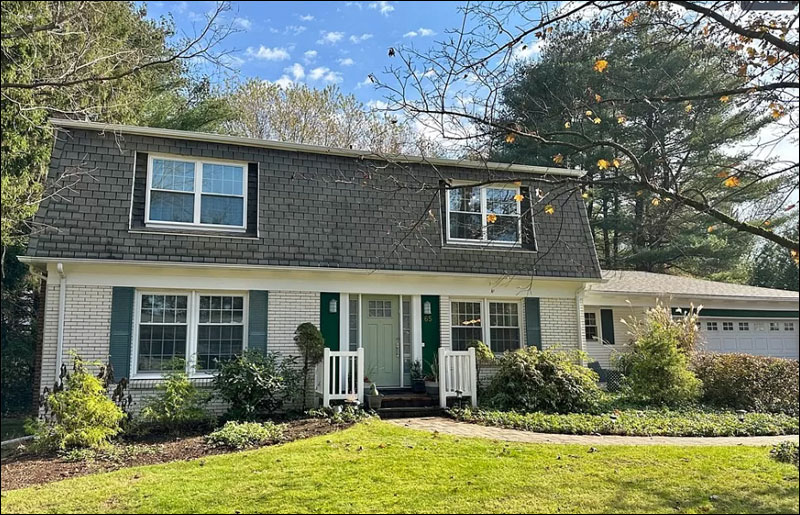Two January Property Sales Illustrate How Family Housing in Amherst is Increasingly out of Reach

Photo: Hawaii State Public Library System. Creative commons
Gentrification and ‘Rentification’ Threaten Would-be Homebuyers
The Daily Hampshire Gazette’s Area property deed transfers for Jan. 18 reports two home sales in Amherst this week. Each exemplifies a different troubling trend that is contributing to the disappearance of moderately priced family homes in town; declining enrollment in our public schools and the degradation of vibrant, tight-knit neighborhoods. These economic and demographic trends might be described as rentification and gentrification.
The purchase of 35 High St. by Kirkpatrick Realty LLC for $1,500.000 is a stark example of how the demand for short-term rentals, largely by university students who are unable to find suitable housing on campus, has driven developers and rental managers to carve up homes built for a single family into lucrative apartments, and to be willing to pay a premium for the properties.
The property card for 35 High St. shows that it has been divided into a 1-bedroom basement apartment, six studio units on the first floor, and two larger apartments on the second and third floors. The former owner, listed as Henry A Brown c/o Kendrick Property Management, bought the house for $175,000 in 1984. At the time of its recent purchase, the property was assessed at $615,700. Mr. Brown appears to have done quite well to receive $1.5 million for it.
Attached to the property card is a rental permit that expired in June of 2020.
The pattern of family homes being replaced by rental properties has been associated with a burgeoning UMass enrollment that has increased from 23,332 in 2002 to 31,810 in 2023 according to a university factsheet. UMass has reported a net gain of 4000 beds on campus since 2006.
See related UMass Officials Talk Housing with the Planning Board

Scarcity, Taxes Drive Up Cost of Home Ownership
The sale of 65 Grantwood Drive, a five-bedroom home in a family neighborhood off East Pleasant St., for $625,000 illustrates how rising prices are putting home ownership in Amherst out of reach of more and more buyers. This trend may be seen as part of a controversial process known as gentrification.
Webster describes gentrification as “an influx of middle-class or wealthy people who renovate and rebuild homes and businesses and which often results in an increase in property values and the displacement of earlier, usually poorer residents.”
The Grantwood Drive property is assessed at $477,400 and was purchased by the former owners for $159,000 in 1992. The owners wisely invested in considerable remodeling over the years, which undoubtedly contributed to the home’s increased value. But the diminishing supply of single-family homes in Amherst as they are replaced by rental properties is also a factor. Throw in Amherst’s larger-than-its-neighbors’ property tax bills and it is easy to see how the influx of long-term residents into Amherst would tend toward the affluent.

Speaking of taxes, homeowners must pay their 3rd quarter of fiscal year 2024 property tax bills by February 1 or face a surcharge and interest.
See related Property Tax Burden Rises 4.8% As Average Tax Bill Approaches $10,000

This article is a bit misleading. When I moved to High Street in 1990, #35 was an apartment building, at the time with about 10 units. What is not seen in the picture, is that the building extends significantly to the back, and the large lot is triangular shaped. The triangular boundary is the RR tracks. Between the house and the RR tracks is enough space for all the tenants’ cars to be easily parked. #35 is also the last residential building on that side of High street before Main St. The site is not a good site for a family home. I’m satisfied that the new owner is maintaining the property as is, and not tearing it down to build a development.
Thanks, Nina, for pointing out that 35 High Street was converted to apartments more than 30 years ago. The report did not mean to imply that the property has been or will be poorly managed.
The key takeaway for me is that the house which last sold in 1984 for $175,000 ($495,000 in today’s dollars) was bought by a real estate LLC for $1.5 million. This raises a few questions:
– Will the town be adjusting the property’s tax assessment (and possibly other homes in the neighborhood) because 35 High St. sold for nearly 2.5 times its assessed value?
– What must the new owner charge for rent in order to recoup his investment?
– Does this sale indicate a market for rental properties that is so hot that real estate investors are willing to pay top dollar for almost any Amherst single family home that becomes available?
– How can prospective homebuyers of modest means possibly compete?
– What can we as a town do about it?